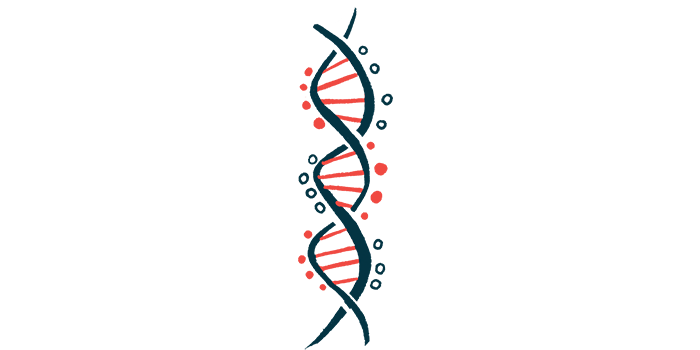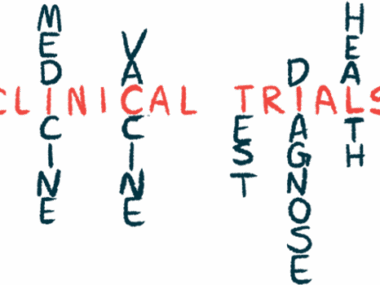Potential PWS therapeutic target discovered, study suggests
Targeting EHMT2 enzyme reactivates silenced maternal genes
Written by |

Targeting an enzyme called EHMT2 may help treat Prader-Willi syndrome (PWS) by reactivating the maternal PWS genes that are normally turned off, according to a new study.
PWS is caused by the loss of certain genes in a region of the paternal chromosome 15 called the PWS locus. Because the PWS locus in the maternal copy is turned off, or silenced, by a natural process referred to as genomic imprinting, genes on the maternal chromosome cannot compensate for the loss of paternal genes.
Reactivating these silenced PWS genes may be a potential approach to treat the disease.
“These fundamental findings support that EHMT2 plays a central role of maintaining the silenced expression of paternally expressed genes in the maternal chromosome,” researchers wrote.
The study, “Mechanism of EHMT2-mediated genomic imprinting associated with Prader-Willi syndrome,” was published in Nature Communications.
Silencing of genes in maternal PWS locus controlled by DNA region
The silencing of genes in the maternal PWS locus is controlled by a region of DNA called the PWS imprinting center, or PWS-IC.
Studies suggest the maternal PWS-IC in germ cells is methylated, meaning methyl groups are added to DNA, which then silences the PWS locus. In contrast, the paternal PWS-IC is unmethylated, and the genes in the PWS locus area are active. In fact, blocking DNA methylation in PWS patient-derived cells restored, or unsilenced, a gene in the maternal PWS locus called SNRPN.
Previously, scientists discovered that inhibitors of an enzyme called EHMT2 (also known as G9a) unsilenced the SNRPN and SNHG14 genes in the maternal PWS locus in cells derived from PWS patients and in a PWS mouse model. Blocking EHMT2 also extended the survival of PWS mice, suggesting that EHMT2 may be a potential therapeutic target in PWS.
Rather than DNA itself, EHMT2 is known to methylate a histone, a protein that binds to DNA in the nucleus and helps condense it into chromatin, the protein-DNA building blocks of chromosomes. When EHMT2 methylates this histone, chromatin condenses into a compact structure, thereby silencing certain genes.
Unexpectedly, restoring these maternal PWS genes with EHMT2 inhibitors did not change the DNA methylation patterns in the PWS-IC.
Researchers investigate alternate mechanism
To learn more, the team set out to understand how EHMT2 works to silence PWS-imprinted genes.
Similar to inhibition studies, deleting the Ehmt2 gene in mice unsilenced the mouse forms of the SNRPN and SNHG14 genes in the maternal PWS locus in the late embryonic and postnatal brain.
In PWS-derived cells, EHMT2 preferentially bound to the maternal PWS-IC, and histone methylation was enriched. This was independent of the DNA methylation status at the PWS-IC. Moreover, the chromatin of maternal PWS-IC was closed and compact, consistent with silencing.
“These results indicate that the DNA regulatory element of PWS-IC in the maternal chromosome is not directly implicated in silencing of imprinted genes in the maternal chromosome,” the team wrote.
Similar results were found using cells derived from people with Angelman syndrome, a disorder caused by the loss of function of the UBE3A gene on maternal chromosome 15, which is silenced on the paternal chromosome by genomic imprinting.
MHT2 at PWS-IC plays a critical role in silencing expression on the maternal chromosome. Our findings have significantly advanced understanding of one of the most investigated imprinting domains in humans to date.
Because DNA methylation at the PWS-IC was not essential for EHMT2 binding, the researchers investigated an alternate mechanism.
The team discovered that an RNA molecule called TSS4-280118 recruited EHMT2 to form a chromatin complex at the PWS-IC. Together, EHMT2 and TSS4-280118 led to the silencing of genes in the maternal PWS locus.
When TSS4-280118 was inactivated by CRISPR/Cas9 gene editing, the SNRPN and SNORD116 genes on the maternal chromosome were unsilenced, supporting “a causal role of TSS4-280118 [RNA] in silencing of PWS-associated genes,” the team noted.
“EMHT2 at PWS-IC plays a critical role in silencing expression on the maternal chromosome,” the researchers added. “Our findings have significantly advanced understanding of one of the most investigated imprinting domains in humans to date.”







